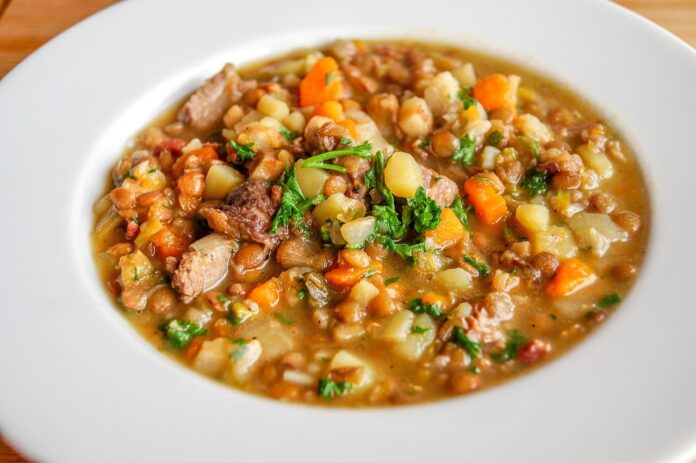Earlier this year eggs topped $4 a dozen, and I decided maybe we would just give up eating. What is the caloric nutrient of air? Free air though. Not the kind you pay for at gas stations.
Groceries have just gotten so expensive. In lieu of giving up food, I decided to double down on food waste and get serious about not throwing out any $7 tomatoes or million-dollar meat.
I try to clean out our refrigerator weekly prior to shopping, but I do concede that sometimes things get away from me. Too often, the “clean out” was a trash bag in one hand, as I lamented the loss of life among the leftovers stored in the balconies and back rows of our fridge.
Leftover
I don’t understand the mindset of people who say they don’t eat leftovers. Leftovers give me life. They also give me a break from coming up with new meal ideas every single day. I read once that marriage is just saying “what do you want for dinner?” to another person over and over for decades and sometimes that feels about right.
My grandmother was a leftover genius. Or, should I say, she was a genius in using leftover food to make amazing and delicious dishes. “Waste not, want not” was her mantra. No food was left behind.
I am certain the roots of this came from her Depression-Era childhood and World War II teenage years. She grew up on a thriving farm with a father who was well-employed throughout, so in that way, she was very blessed. Rationing, however, still meant that creative cooking was the rule of the day.
Staples such as coffee, meat and sugar were all strictly rationed during World War II, which made cooking a bit of a challenge. My grandmother, like most of her generation, was tasked with making things last and stretch. Her work with casseroles was legendary.
To this day, I believe in my heart that anything can be edible if you just put it under a crust. Chicken pot pie is basically leftover chicken and vegetables in a crust. Ditto shepherd’s pie. Take your little dibs and dabs of leftovers and put them in a gravy, and then add biscuits. Done!
Soup
To this day if I cast a side-eye at some sad-looking vegetables in our refrigerator, I know it’s time to make stir fry — or soup. A common name is “trash soup” although you can call it something kinder if you like.
I keep soon-to-wilt vegetables in a bag in the freezer. When I end up with enough bits and pieces to really mean something, they are tossed into a pot with some beans, spices, beef or chicken stock and leftover noodles, potatoes or rice as available. Simmer it all together and you can turn “waste” into a delicious meal.
I always suggest adding salad and biscuits for best results. In fact, my family will assure you that I believe almost anything can be a meal if you just add a salad and biscuits. That pretty much goes with anything.
I’m working up the nerve to try and make my own bone broth and stock too. I haven’t tried it yet but I think I can figure it out.
Oleo
Back to my grandmother’s wise tutelage. I may be the only person by age who understands what “oleo” is. My grandmother referenced it often — not lovingly I might add.
Wartime rations meant that cooks had to come up with ways to make their butter go farther. Oleo is defined as “spreadable and can taste buttery when used directly from the tub or stick for everyday use as a butter substitute. Due to differences in the texture and makeup of oleo, it may or may not be a reasonable butter substitute for baking and cooking.”
I am here to assure you it is most certainly NOT a reasonable substitute for my baking. My grandmother had a few tried and true oleo recipes in her arsenal. However, as soon as the war was over, she went back to real butter.
Real butter IS a hill I am willing to die on. If I die due to high cholesterol — so be it. Just know I died doing what I loved — eating real butter-baked goods.
There is one key component of my palate that came directly from my grandmother. Strong black coffee. One heavily rationed item was coffee. To get around shortages, people would fold chicory root into their coffee to make the grounds last as long as possible. Chicory root has a similar rich flavor with one major difference — there’s no caffeine.
I’m all for frugality and savings, but at this I have to draw the line. No caffeine sounds impossible and in my case, might actually lead to war.
















Nice job! I never tire of hearing stories of learning about creative and frugal cooking from grannies! Thank you.